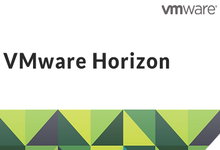VMware Horizon is a family of desktop and applications virtualization solutions designed to deliver Windows and online services on premises. With Horizon 6, VMware extends the power of virtualization from data centers to devices to deliver desktop (VMware VDI) and application virtualization with great user experience and closed-loop manageability. Horizon deliver virtual or hosted desktops and applications through a single platform with VMware Horizon 6. This article helps you to understand the various Horizon View Licensing options available and how to assign Horizon View Licensing in the View admin Portal.
Horizon View Licensing -Overview:
VMware Horizon 6 is available in 3 editions: View Standard, Advanced, and Enterprise. All three editions include all components needed for an end-to end virtual desktop deployment. You can take a look at my article of VMware Horizon View-Edition Comparison
Horizon 7: Delivering Desktops and Applications as a Service Horizon 7 enables IT to centrally manage images to streamline management, reduce costs, and maintain compliance. With Horizon 7, virtualized or hosted desktops and applications can be delivered through a single platform to end users. Verify that the Desktop, Application Remoting, and View Composer licenses are enabled or disabled, based on the edition of VMware Horizon that your product license entitles you to use. Not all features and capabilities of VMware Horizon 7 are available in all editions. VMware Horizon View 7.x VMware Horizon View 7.x was used as the connection broker, which allows administrators to deliver virtual desktops and applications to their users while centralizing the control and security of user data without sacrificing desktop ease and usability.
- VMware Horizon View Standard Edition – Simple powerful VDI with great user experience.
- Horizon Advanced Edition – Cost-effective delivery of desktops and applications through a unified workspace
- Horizon Enterprise Edition – Desktop and application delivery with closed-loop management and automation
Concurrent Connection User (CCU) vs. Named User (NU) Licensing
VMware Horizon View enables users to access virtual desktops and applications through a single pane of glass. There have been many improvements added to the release of Horizon View 7 such as Blast Extreme protocol, Instant Clone, enhanced security and policy management. 2018 Mar 8 – in Install Horizon Agent section, added link to Terence Luk Add features to an existing VMware Horizon View 7.x Agent install. 2018 Mar 4 – in Install Horizon Agent section, added link to VMware 51518 Production Support for VMware Horizon 7.4, 7.3.2, and 7.2 with Win 10 1709 Semi-Annual Channel (SAC) Guest OS.
The Horizon Advanced and Horizon Enterprise editions are available in two license models:
Per named user (NU) – For virtual environments with staff that require dedicated access to a virtual machine throughout the day.
Perpetual per concurrent connection (CCU) – For virtual environments with a high number of users who share machines throughout the day, such as students and shift workers. A concurrent connection is defined as a powered-on VM and connected virtual desktop session. In this model, licenses are owned by organizations, not individual users.
Horizon View Standard is only available on a concurrent connection basis.
What is bundled in each Horizon 6 Edition?

Assigning Horizon View License:-
Horizon View 6 Related Articles:
Virtual desktop infrastructure (VDI) products, such as VMware Horizon®, enable IT departments to run virtual machine (VM) desktops and applications in the data center or cloud and remotely deliver these desktops and applications to employees as a managed service. This computer-within-a-computer strategy enables multiple VMs to be run per physical server core.
For administrators, this means desktop and application management can be simplified, automated, and made more secure. Admins can quickly create virtual desktops on demand based on location and profile, and securely deliver desktops as a service from a single control plane. VMware Horizon supports hybrid (on-premises but managed in the cloud) as well as multi-cloud architectures, to enable global entitlement and management.
End users can access their personalized virtual desktops or remote RDSH-published applications from company laptops, their home PCs, thin client devices, Macs, tablets, or smartphones. Horizon is the leading platform for Windows desktop and application virtualization, providing a consistent user experience across devices, locations, and networks. All of this is accomplished while keeping corporate data compliant and securely stored in the data center on premises or in a private or public cloud, such as Microsoft Azure, VMware Cloud™ on AWS, Google Cloud, IBM Cloud, or other partner clouds.
When VDI solutions first started appearing, about a decade ago, the strategy was to take a Windows desktop system, install applications, virtualize the whole thing, and place it in the data center. Unlike this traditional VDI, Horizon is built on technologies that allow components of a desktop or application to be decoupled and managed independently in a centralized manner, yet reconstituted on demand to deliver a personalized user workspace.
Vmware Horizon View Agent Download
For example, when the user logs in, a virtual desktop can assemble itself on the fly by combining an instant clone of a golden image (VM) with a user environment profile and one or more containerized applications that attach themselves to (but are not installed in) the VM.
Vmware Horizon 7.4
Besides improving on traditional VDI, Horizon allows the same strategy to be used with Microsoft Remote Desktop Session Host (RDSH) server farms, which provide published applications and desktops.
Vmware Horizon View 7 Keygen Download
In addition, Horizon integrates with VMware Workspace ONE® on a common identity framework to provide a single catalog for accessing Windows applications and desktops, as well as software-as-a-service (SaaS), web, cloud, and native mobile applications.
